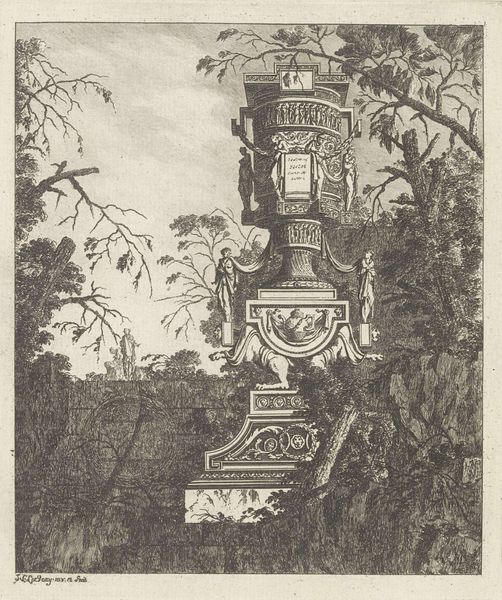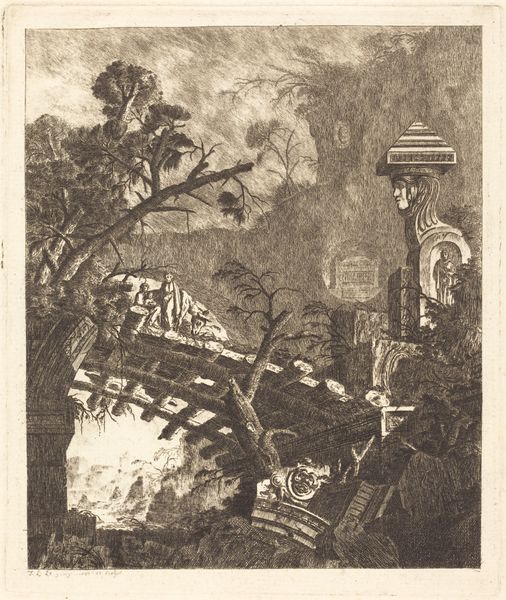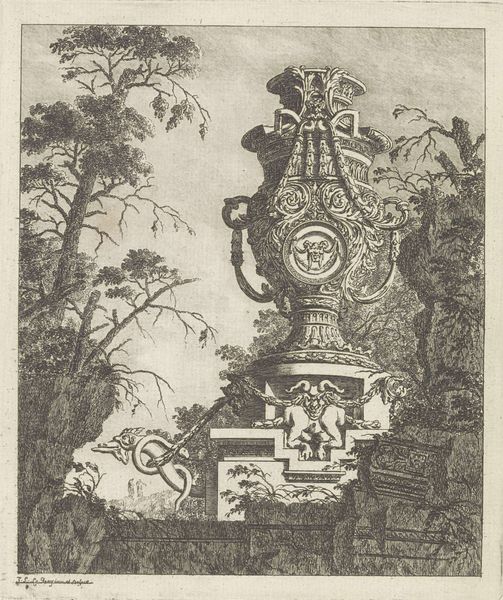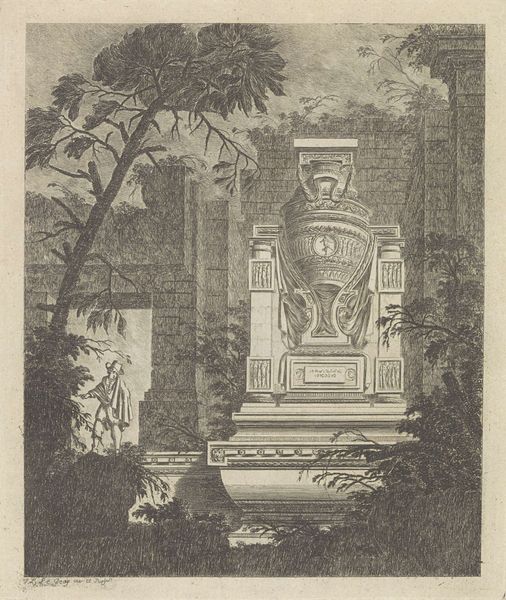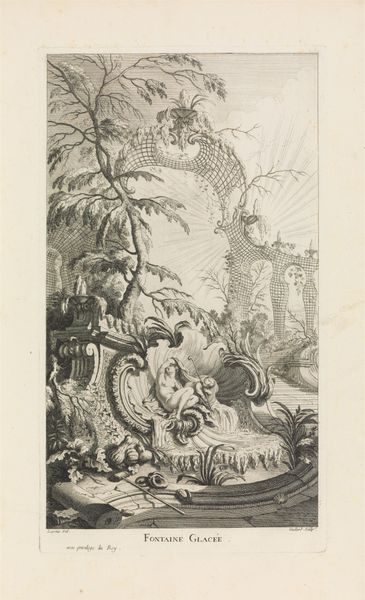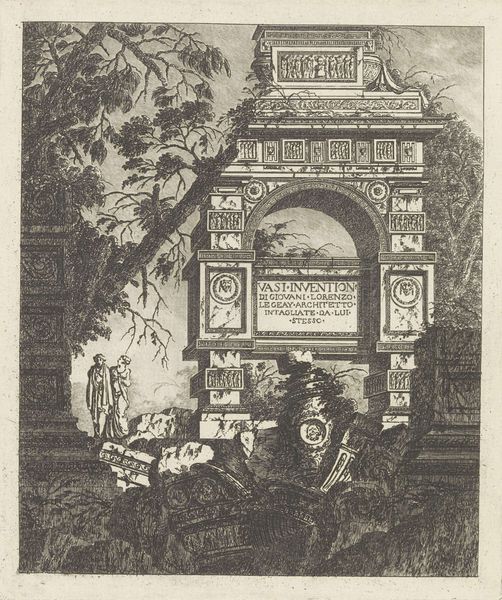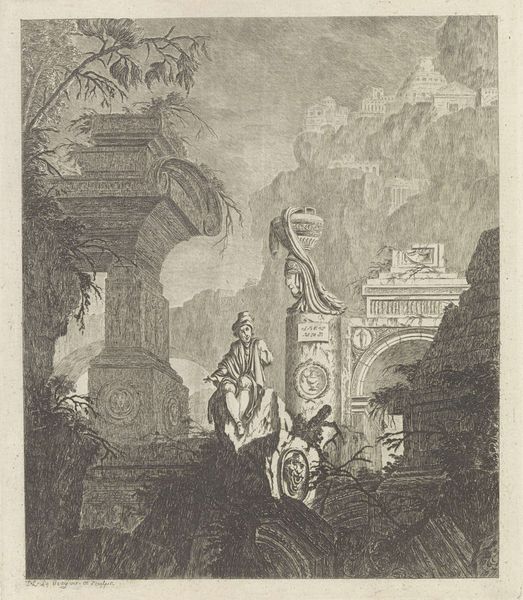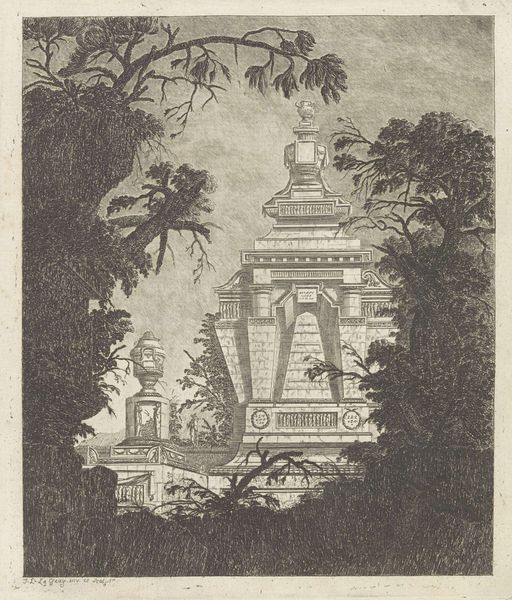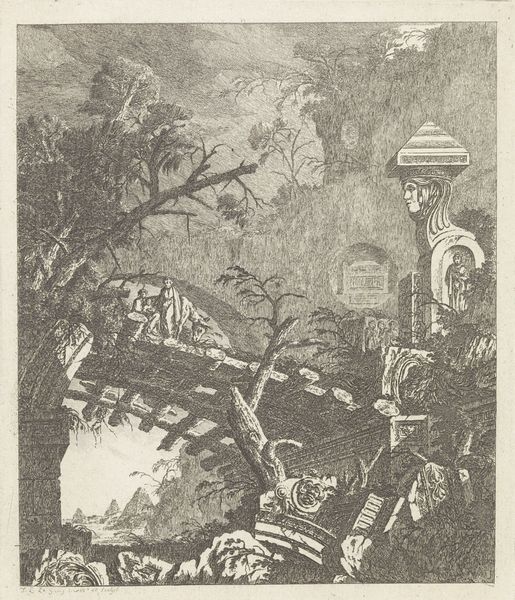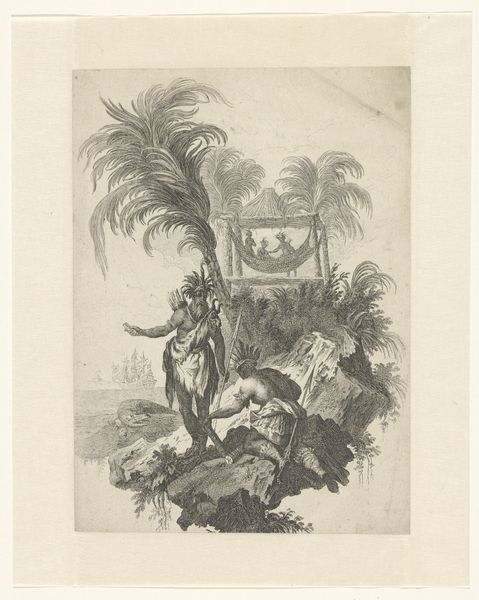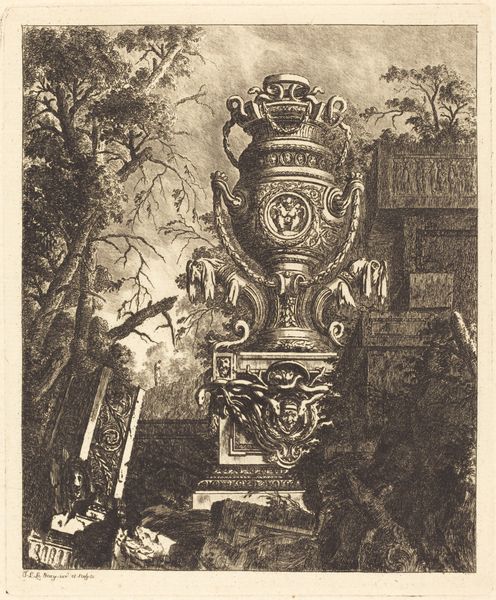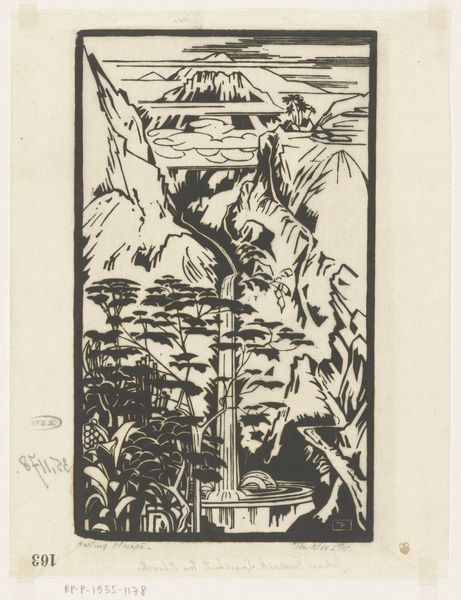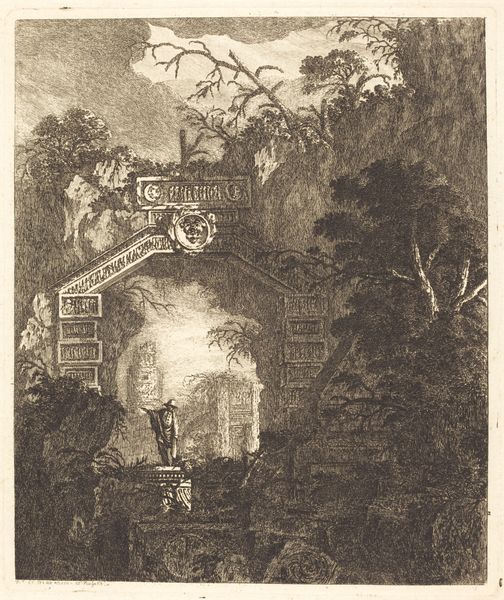
print, fresco, engraving, architecture
# print
#
old engraving style
#
landscape
#
form
#
fresco
#
line
#
history-painting
#
engraving
#
architecture
#
rococo
Dimensions: height 195 mm, width 165 mm
Copyright: Rijks Museum: Open Domain
Curator: At first glance, the intricate details give me a sense of grandeur and melancholy. What do you make of it? Editor: This is “Landschap met ruïnes en groteske vaas,” or “Landscape with Ruins and Grotesque Vase,” a print made by Jean Laurent Legeay sometime between 1767 and 1770. Legeay was a significant figure in the late Rococo and early Neoclassical movements, heavily influencing French architecture and design. Curator: Ruinscapes like this often invoke complex narratives. The vase, an object of immense cultural value, stands among remnants of past glory, and seems to dominate the natural world, as if claiming dominance. Editor: Absolutely. The vase itself acts as a potent symbol of history and enduring power, even amidst decay. Its presence invites reflections on how civilizations rise and fall. What stories and values have been lost? Who benefits from this revision of historical memory? The positioning also hints at an inherent imbalance in whose culture remains and whose fades from prominence. Curator: And note the people in the lower left! They look so small in comparison to the vast structures and the vase itself, seemingly dwarfed not just by their surroundings but also by time. Perhaps the print implies their powerlessness within a much grander sweep of historical events? Editor: Precisely. The juxtaposition invites questions about human agency within monumental shifts and historical power dynamics. The choice to render it in print, readily reproducible and accessible, implicates how meaning can proliferate with cultural significance. It highlights accessibility to broader society while solidifying Legeay's impact. Curator: Considering its themes, it's tempting to interpret it as a reflection on 18th-century French society. With its deep contrasts, it suggests to me that Legeay wanted us to examine power and permanence and, perhaps more crucially, how they are always negotiated in any social environment. Editor: I agree. The enduring power of symbolism certainly ensures that art keeps pressing and prodding across historical changes. Curator: It all seems quite relevant, considering contemporary struggles. Editor: Indeed, its beauty remains profoundly unsettling, prompting ongoing re-evaluation.
Comments
No comments
Be the first to comment and join the conversation on the ultimate creative platform.
